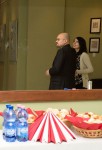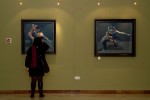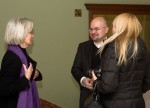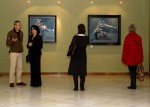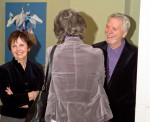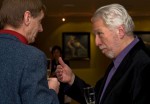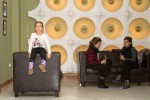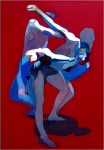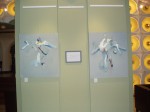2011/12/07-2011/12/30
Michael Milburn Foster’s Hungarian Dancers exhibition will be seen from 7 December at Hungarian National Dance Theatre.
Judit Mandy’s speech from the exhibition opening:
I met Michael a little over a year ago and since then we’ve had many discussions about art in general and his paintings in particular. This has been important to me since, from the very beginning of our relationship I wondered how I could relate to him—after all, he worked in paint, I worked in words.
And, in fact, I found that when I saw his paintings for the first time, my words failed me. I just kept saying “lovely” or “beautiful.” These words expressed what I felt, but I also knew that I felt—and saw—more. But I didn’t know how to express it.
I think that for those of us who are not artists this is a common situation: we know that we respond to the visual representation of something, but don’t know exactly why.
And so for this reason as we look at these lovely, beautiful paintings at this special opening, I wanted to share with you the things Michael has told me over these last months about his work, and about how he works.
First of all, although he has always been a painter, Michael’s extensive work as a film director led to his fascination with the moving image, especially the human figure in motion– and what better figures to study than dancers?!
He begins with videos he has made of professional dancers performing in his studio. He selects numerous still frames and from these he does a great many drawings. And then he over-lays two, often three positions taken from a particular sequence of the dance.
This sounds simple, but it is that mysterious thing called “creative talent” that makes it complex. As Michael says, “I work out the essential lines and shapes that describe the movement; I leave out the parts that detract from the movement—for example, a head—because a head becomes too essential. If you put in all the information, the viewer sees just what’s on the surface—a couple of dancers. I don’t want to blur the figures in order to create the idea of movement, like in a photo. The whole point is the ambiguity of the composition. It’s absolutely important that there’s ambiguity so that the viewer’s eye has to move between two–three positions.”
And referring to another artist who painted dancers, Michael has also said, “Degas knew that the spaces between the ballerinas are as important as the ballerinas themselves. So really, the parts you leave out are as important as the parts you put in!”
But the process of creativity can also catch the artist unaware, for Michael admits, “Often, doing the initial drawings and putting them together, I’m surprised myself because so many of the lines appear to join up and make a rhythm, so it’s almost like drawing music.”
Color is another element that we non-artists relate to in a painting, from stating simply, “Oh, I love that color!” to “Isn’t that an odd color to use!”
About his use of color Michael says, “I’m working in a tonal range because I want people to see the shapes. I’m confident that my shapes and lines create movement, but color is a third element I’m learning about. For example, a dot of red or yellow can transform or dominate a painting. Matisse said that if he changed one color he’d probably have to change the whole painting.”
And so, we see in his paintings and especially in his latest work, the beginnings of the Blue Collection that you see behind me, Michael feels he has achieved what he has been trying to do – to create the illusion of movement in a static image.
The ambiguity is there, the colors are there, our eyes see this and move among it all. We can understand why the dancers move, see how the dancers move, and we can still say, “Beautiful!”





